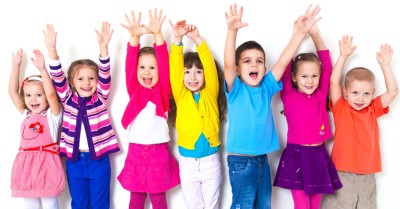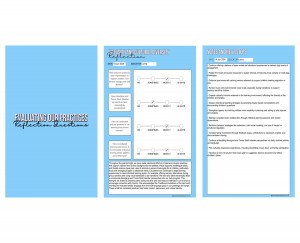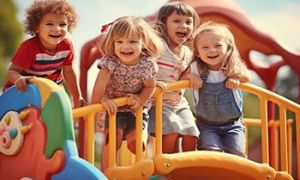Celebrations are among the most important binding factors in any community or society. In childhood services too, celebrations can be a great way to nurture a sense of being and belonging in children, when planned and implemented with sensitivity and reflection. Here are a few things to keep in mind when incorporating celebrations in early childhood services.
Understand Culture
It is easy to be aware of the extrinsic aspects of culture, like language and ethnicity, as well as visible influences that shape culture like age and gender. However, there are many less visible factors like work, religion, food preferences, money, life experiences, marital status, money and so on, that shape beliefs and values. So when planning celebrations, adopt a more holistic view of culture since families are likely to have their own cultural beliefs and practices about celebrations. Use Enrolment forms, Informal conversations, Surveys and Formal meetings with family members to gather information to help you plan appropriate and respectful celebrations.
Build Your Cultural Competence
The EYLF states that ‘Educators who are culturally competent respect multiple ways of knowing, seeing and living, celebrate the benefits of diversity and have an ability to understand and honour differences’. So foster your own cultural competence so that you are able to identify opportunities and ways of respecting and celebrating different attitudes, beliefs and views of others. When exploring celebrations, this can be achieved by planning a range of celebrations that are relevant to the children, educators and the community in which the children’s service exists.
Nurture Appreciation of Similarities and Differences
Celebrations are a hugely enjoyable way to nurture cultural competence in children so that they become aware of and learn to appreciate diverse values and beliefs that exist within the community. You can do this by making celebrations an opportunity for children to discuss similarities and differences in the way materials and objects are used. For example, while red is a celebratory colour in many cultures, the way it is used may differ. Thus Chinese New Year rituals use red to ward off evil spirits and encourage happiness while Santa’s red suit in Christmas celebrations makes for a jolly convivial atmosphere.
Make Celebrations Child-Centred
Involve children when marking celebrations in the cultural calendar to enhance their sense of belonging in culture and community. Use art and craft time to get them to make decorations for celebrations. Another important way to build agency in children is to invite them to share which personal or family milestones they would like to celebrate, like getting a new pet, riding a bike or a grandparent coming to visit. When planning celebrations, ensure that children have adequate resources and time to be able to celebrate effectively. Also, create an awareness of the celebration among other children as well as the wider childcare community.
Involve Families
In order to make celebrations respectful and relevant, reach out to families. Use orientation events not only to find out the festivals they celebrate but also how they would like their child to learn about and participate in diverse celebrations. Communicate with families about which significant moments at home and in the child’s personal life might be celebrated. Gestures like sending a card to the families to celebrate the important milestones in a child’s development go a long way in building a nurturing environment for children.
Finally get inputs from key stakeholders like other educators, administration and families to devise and regularly review a clear policy and procedures for celebrations. Such a policy should be reflective of the needs and practices of the local community while also respecting the right of families and children to not participate in celebrations.
Reference:
Exploring Celebrations In Children's Services, ACECQA







 As an Educator in Australia, your pay rate falls under the Children’s Services Award 2010. This award states the minimum amount that an employer can
As an Educator in Australia, your pay rate falls under the Children’s Services Award 2010. This award states the minimum amount that an employer can When working as a qualified Early Childhood Teacher (with a university degree) within a service, your rate of pay will come from the Educational Services
When working as a qualified Early Childhood Teacher (with a university degree) within a service, your rate of pay will come from the Educational Services When working as a Diploma Qualified Educator your pay rate is from the Children's Services Award 2010. This Award states your minimum rate of pay
When working as a Diploma Qualified Educator your pay rate is from the Children's Services Award 2010. This Award states your minimum rate of pay When working as a Cert 3 Qualified Educator, your pay rate is from the Children's Services Award 2010. This Award states your minimum rate of
When working as a Cert 3 Qualified Educator, your pay rate is from the Children's Services Award 2010. This Award states your minimum rate of Educational Leaders play a crucial role in their early childhood service by ensuring that the educational program aligns with best practices and supports the holistic
Educational Leaders play a crucial role in their early childhood service by ensuring that the educational program aligns with best practices and supports the holistic In early childhood education and care, ratios are more than a technicality—they are a frontline safeguard. Every child deserves responsive supervision, emotional connection, and developmental
In early childhood education and care, ratios are more than a technicality—they are a frontline safeguard. Every child deserves responsive supervision, emotional connection, and developmental With the new national child safety reforms kicking in on 1 September 2025, early childhood services like yours have a real opportunity to lead the
With the new national child safety reforms kicking in on 1 September 2025, early childhood services like yours have a real opportunity to lead the Here’s a comprehensive Mobile Phone and Smart Watch Policy tailored for early childhood education and care (ECEC) services in Australia, aligned with the latest 2025
Here’s a comprehensive Mobile Phone and Smart Watch Policy tailored for early childhood education and care (ECEC) services in Australia, aligned with the latest 2025 The Sea of Fish Challenge is a national initiative that invites children, educators, families, and communities to create and display fish artworks as a symbol
The Sea of Fish Challenge is a national initiative that invites children, educators, families, and communities to create and display fish artworks as a symbol Across the early childhood education and care sector, educators are sounding the alarm: current staffing ratios are insufficient to deliver safe, meaningful, and developmentally appropriate
Across the early childhood education and care sector, educators are sounding the alarm: current staffing ratios are insufficient to deliver safe, meaningful, and developmentally appropriate


